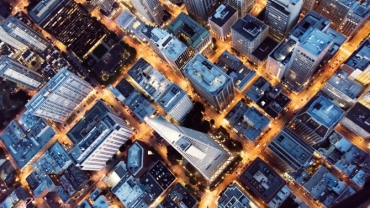
Our current economic system is easy to describe: “take – make – waste”. Every day we extract more resources that we superficially enrich with energy and labour. We use the results, and in the majority of cases ultimately produce waste. In the last 15 years, for example, the production of clothing has doubled. One driver behind this is clearly the fast-fashion phenomenon: more and more clothes being worn less and less only to disappear into the endless depths at the back of your wardrobe. According to the World Economic Forum, the clothing industry alone is responsible for up to 10 per cent of all our current CO2 emissions. The ever-cheaper prices mean that the piles of clothes are growing ever faster and ever larger. According to the Ellen MacArthur Foundation, about one truckload of clothing is now either burned or buried in landfills each second. Specifically, this means that we are simply and unwarrantedly destroying around USD 460 billion. The same applies to all other industries without exception – from A for alarm clocks to Z for zippers. The statistics paint the same picture throughout our economy: hyper-optimised companies with their focus on costs and turnover, ultimately on profit. In the end, the average Swiss person today consumes more than three times the limited resources of our planet. Each year.
Recently, however, and fuelled by the current COVID-19 crisis, we have also seen an accelerated shift towards sustainability. A lot of emphasis is placed on the recyclability of products. On the face of it, this sounds good, but for all the good it does, it is also based on the current system – the linear model described above, albeit deprived of its extreme features. The formation of waste is deferred, but inevitably waste is produced wholly or in part.

The necessary system change: from linear to circular
Nature, from which everything is basically derived, knows no waste. Every leaf that falls from a tree is put back into the natural life cycle. The same applies to every animal, every human being. Everything is determined by cycles. So why would this principle not apply to our economy? Just because we switched to the linear model during the industrial revolution and drove it to an extreme? A simple look at the world with all the crazy human destruction on land, at sea and in the air makes us realise that we are clearly on the wrong track. What is the solution to this problem? It’s obvious: what we need is an interdisciplinary and all-encompassing shift to circular models. We need to change for our planet, for us, and especially for our children. No excuses! The future is what it has always been: a circle.
Circular models create closed material and energy cycles – without waste. In the end, waste is and remains only an indicator that something isn’t going right. It represents a loss that nature doesn’t know in this way. As long as there’s waste – be it the paint which can’t be dissolved back into its natural components, or the packaging that is non-degradable, or insulating material that that can’t be fully recycled – we face a problem. All “loss” should at least become input for another production cycle. Hence, it should either be useable as a by-product or as an essential resource for another industrial process or degraded into natural decomposable soil.
Biological and technological cycles
Here we see two cycles: the biological and the technological. “Consumption” happens in the biological cycles, where food or bio-based materials are designed to return to the system through processes such as decomposing and anaerobic digestion. These cycles regenerate the foundation for life, such as soil, which in turn provides opportunity for new life. Equally, the technological cycles recover and restore products, components and materials through strategies such as reuse, repair and recycling. Already today there are numerous companies, including domestic Swiss companies, demonstrating the feasibility and practicality of these practices. Starting with clothing to innovative watches, cosmetic products and fabrics, these products are triggering a significant change: a change in our habits and behaviours. Now I no longer have 65 T-shirts in my wardrobe, but twelve. When a shirt gets old, it’s either recycled at home or exchanged for a new one at the manufacturer, who recycles it. Needless to say, its packaging is its permanent companion on this journey.


Exponential technologies will change and accelerate innovation cycles to an almost unprecedented degree.
Exponential technologies and decentralisation
I think there will be two big themes in the next few years that will drive us towards the circular economy. Firstly, the younger generations. I’m astounded every day when I talk to them about ideas on reaching a sustainable tomorrow. Even at the rapidly growing circular economy conferences they’re the ones who really believe, promote and drive the exciting projects.
Secondly, exponential technologies. In their manifold combinations they allow leaps in development at unprecedented speeds. These technologies will change and accelerate innovation cycles to an almost unprecedented degree. This is also pointed out by one of my alma maters, the Singularity University in California’s Silicon Valley. Among all the different possibilities, we are particularly excited about the practical application of blockchain technology in combination with artificial intelligence and quantum computing. These will prove vital for environmental protection and the development of a circular economy that is fit for the future.
Sooner or later, I also expect to see accelerated and sustainable decentralisation here in Switzerland. Fewer young people will want to work in the phallic buildings of old tradition with military hierarchical structures. Instead, they will strive to work in their own companies by applying their strengths at a local level while benefitting from a global network. This “going local”, coupled with sustained global acumen, is a precious asset.
Disruption and regulation
In this shift from the linear to the circular, we are undoubtedly talking about the disruption of familiar models and structures. Historically, change always meant a replacement of the old players by new ones. No carriage manufacturer is a car producer today, and no typewriter manufacturer has made the jump to producing mobile phones. What will the next technological advance look like? Certainly there are great expectations of start-up companies. However, the established companies also have opportunities to develop. Compared to the past, companies are much more diversified and dynamic. Some have already launched circular projects as part of their future strategy.
Will this be enough? It remains to be seen. Ultimately, the regulatory framework will be crucial. Significant efforts in regulation at the EU level, but also in Switzerland, are already outlining where this journey may lead. The decisive question remains: Is it just a matter of greenwashing, or do we embrace the underlying considerations and translate them into binding laws?

New opportunities, new processes
Playing a part in the circular economy in general and circular finance in particular opens up a whole variety of opportunities for businesses. First of all, they will contribute meaningfully to meeting climate targets. Secondly, businesses show they are forward-looking, bolster their reputations and secure a valuable competitive advantage. Circular finance means businesses have to examine their entire value chain and re-orient it if necessary. This can involve everything from procurement of raw materials or semi-manufactured goods to reviewing dependence on monopoly suppliers and seeking out alternative procurement methods, through to gradually reducing toxic chemicals and investing in innovation.
Contact us
Partner, Sustainable Capital and Sustainability & Strategic Regulatory Leader, PwC Switzerland
+41 58 792 45 23







